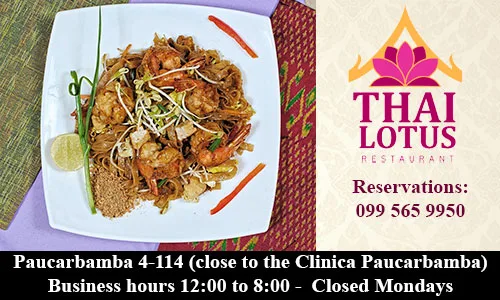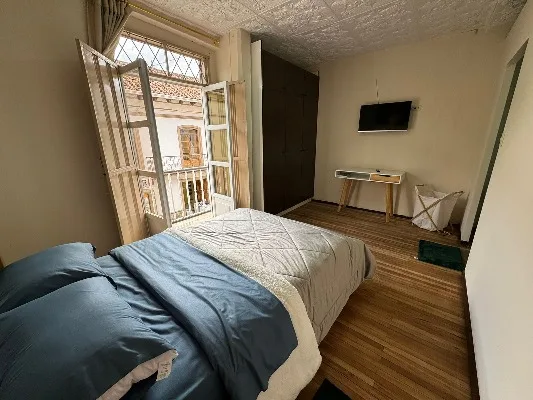A day trip to Girón offers tranquility, waterfalls, fabulous views and lessons in Ecuadorian history
By Deke Castleman
Heading southwest from Cuenca on the road to Machala and Loja, you leave the city behind fairly quickly and enter the ranch country of the Tarqui Valley, with cattle grazing on rich green grass and the Andes towering over everything.
You pass a couple of dairy stores, such as Lacteos Compero, which sell local milk products. Vermont it ain’t, but you can buy a cup of fresh yogurt for 75 cents and a gallon for $3.25, along with queso fresco, the soft cheese you see everywhere around Cuenca. Recently, area farms have started producing aged cheeses, such as cheddar.

Soldiers reenact the Battle of Tarqui, south of Cuenca.
From the ranchlands, the road starts to climb. A little past the settlement of Portete, on the left a dirt road leads up to a monument commemorating the Battle of Tarqui, fought between troops from Peru and Gran Colombia, to which Ecuador belonged at the time of the battle.
José de la Mar, then-president of Peru, marched into Cuenca in early 1829 at the head of 4,500 Peruvian soldiers; la Mar was born in Cuenca and apparently intended to claim it for Peru. However, Símon Bolívar, the Great Liberator of South America and the leader of Gran Colombia, which included Colombia and Venezuela, as well as Ecuador, dispatched General Antonio José de Sucre and 4,200 troops.
The armies clashed on February 27, 1829. Gran Colombia emerged victorious, with 360 dead and wounded and 600 desertions, while the Peruvians sustained 400 dead and 600 wounded; 300 were taken prisoner. After the battle, the forces of Gran Colombia also retook control of Guayaquil from Peru.
You walk up 50 or so steps to four obelisks that rise from the top of the monument; this is the highest point on the trip at 8,900 feet, with a glorious view of the valley where Girón is situated. In fact, from here, it’s down down down all the way to the coast at Machala, roughly 60 miles to the southwest.

The Museo Histórico Militar in Girón chronicles the Battle of Tarqui and displays artifacts of colonial Ecuador.
The spot also marks the South American Continental Divide, where the rivers start to run west to the Pacific. East of here, all the Andean rivers flow into the Amazon and, eventually, the Atlantic.(The Tomebamba and Yanuncay rivers, for example, flow east through Cuenca.)
From the monument, the road drops quickly and you’re at around 6,800 feet when you enter the town of Girón, situated in a gorgeous valley with towering peaks to the east.
Located roughly five miles from the battle monument, Girón is 1,500 feet lower than Cuenca. Thus, it’s a bit sunnier, warmer, and drier; though it’s only 25 miles from Cuenca, it receives 30% less precipitation. It’s bordered on the northeast by Portete Hill, to the south by the fertile Yunguilla Valley, and on the east by El Chorro Mountain. The headwaters of El Chorro River form three waterfalls, including a magnificent double waterfall, that can be seen from town; the river flows through Girón, then joins the Ricay River, which joins the Jubones River.
This area was originally occupied by Cañaris; during the Inca Empire, it was known as Pacaybamba (“Guava Tree Valley”). The town was named after Captain Francisco Hernández Girón, a member of Sebastian de Benelcazar’s army when he captured Quito in 1534. Though many of the indigenous inhabitants fled into the surrounding mountains and countryside when Captain Girón and his men camped nearby later that year, the town was named for him. Girón was declared a Patrimonio Cultural de la Nación on December 20, 2006.

El Chorro waterfalls, just west of Girón, are a popular tourist destaination.
Girón has a friendly and clean indoor mercado, with plenty of local products, including subtropical produce. Girón’s church is distinctly modern, completed in 1968, with striking stained-glass windows in the basilica. There’s not much colonial architecture around town, but the Casa de los Tratados (House of Treaties) Museo Histórico Militar is Girón’s focal point.
The museum, founded by the Ecuadorian Armed Forces in 1978, is located in the old home, just off the main square on Bolivar and Cordova streets, where the peace treaty between Gran Colombia and Peru was signed after the Battle of Tarqui. (A year later, Gran Colombia was dissolved and Ecuador became its own country.)
The walls are lined with portraits of the heroes of the battle and war. A number of the weapons are on display, such as long muskets with wicked-looking rapiers and bayonets, and short pistols, with an accompanying display of lead bullets. Army boots, military flags, a major diorama of the battle site, and a map from 1829, showing graphically how big Ecuador was at that time, round out the displays on the ground floor.
Upstairs are more portraits, the table and chairs where Peru and Ecuador signed the first of a number of its treaties extending from 1829 through 1995, blue and red uniforms, more flags, and more guns; outside is a verandah with a nice view onto the gardens and a timeline along the wall in several languages.
The museum is open Mon.-Sat. 8 a.m. to 4 p.m.; admission is $1 and well worth it for the local-history lesson.
A little more than three miles from town is the famous 200-foot-high Chorro de Girón, the first of three waterfalls lined with moss and bromeliads. A two-hour hike through lush vegetation under a cloud-forest canopy leads to its base, or catch a pickup taxi from town that charges around $6 for the 20-minute ride. Hire a guide at Chorro to hike up to the two other waterfalls, a strenuous 75-90 minutes farther up the mountain. Tours from Cuenca are also easily booked.
The surrounding Yunguilla Valley, known for its temperate climate and fertile surroundings, also offers hiking, along with bicycling, horseback riding, bird watching, trout fishing, rock climbing, and camping.


















